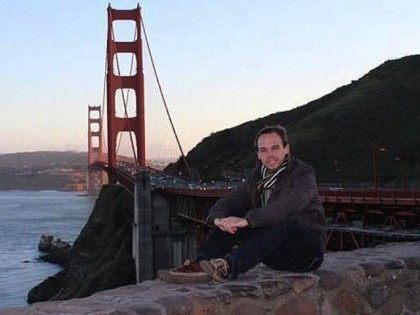More from "the culture of death" :
At 4:22 PM on September 12, 2008, a Metrolink passenger train ran a red light at the CP Topanga signal near the Chatsworth section of Los Angeles and plowed head on into a Union Pacific freight train, causing the deaths of the engineer and over 20 passengers. It was the nation’s deadliest train wreck in 15 years. The train wreck occurred on a curve just after the freight train had emerged from a tunnel, which meant that the engineers of the two respective trains had four seconds to react from the time the trains became visible to each other. During those four seconds the engineer of the freight train and his assistant applied the train’s emergency break and jumped from the train. Both men survived.
During those four seconds, the engineer of the passenger train did nothing, allowing his train to plow into the freight train at over 40 miles per hour.
Within hours of the wreck, the spokesman for Metrolink blamed the crash on human error, and from that moment on the investigation focused on Robert Sanchez, the 46-year-old engineer of the Metrolink train, but the post-mortem following the crash soon became a hermeneutical battle, in which determinations about what could be said and what could not be said got made with little if anything to do with the canons of railroad safety.
Four days after the crash, California Senator Diane Feinstein delivered her verdict. The problem, according to Feinstein, was Sanchez’s work schedule, which made him work “an ‘untenable’ schedule of 11-hour days, five days a week in split shifts.” By the time hearings on the crash got held, people were lining up to make sure that this cloud had a silver lining for whichever group they represented. Speaking at a United States Senate hearing on the crash, Metrolink Chairman Ron Roberts began his testimony by extending “sincerest regret for this situation” but then got down to the business at hand. “This collision is not just what the NTSB determines to be the cause,” Roberts hinted darkly. “It’s about our nation’s lack of investment in passenger rail as a whole.” Roberts, in other words, used the deaths of 25 people as an opportunity to ask for more money from the government. Labor wasn’t much better than management when it came to self-serving statements about the cause of the crash. Tim Smith, California Chairman of the Brotherhood of Locomotive Engineers and Trainmen, saw the Senate hearing as a way of doubling the members of his union, claiming that “the deadly crash is a good reminder why railroad companies should always place two engineers aboard a train.” Those familiar with railroading have questioned Smith’s claim because experience has shown that when trains have two engineers they tend to distract each other with their talking.
By the time the Senate held its hearings, there was plenty of evidence about the crash concerning human error, the biography of the engineer, distraction, and a host of other details. The main issue was not gathering information. The main issue was determining which information could be deemed relevant according to the canons of acceptable discourse.
One of the first details to emerge in the aftermath of the crash was that Robert Sanchez was a homosexual, a detail which emerged from an AP story on his “troubled personal life” along with stories about traffic violations and larceny convictions. It seems that Sanchez’s “partner” had committed suicide in 2003 and Sanchez had received only three days off with pay to deal with the grieving process. Some observers wondered whether the wreck had been caused by aborted grieving resulting from too few paid grieving days. Some railroad workers complained that their employers allowed them three days off work but without pay.
Carolann Peschell, the sister of Sanchez’s deceased “partner,” felt that Sanchez had murdered him, but she could never get anyone to take her claims seriously. Peschell described Sanchez as “very odd, very strange,” but the rest of the press accounts seemed determined to explain how normal he was once it became clear that he was a homosexual...
On October 1, 2008, the railroad workers began to discuss Sanchez’s penchant for “texting.”...
Robert Sanchez, it turns out, wasn’t “‘texting’ 22 seconds before the crash—regardless of his ‘orientation.’” He was texting 22 seconds before the crash because of his orientation. Sanchez, it turns out, “was something of a celebrity . . . among young train fans,” which was the main-stream media’s way of saying that he was in the habit of communicating with teen-age boys while he was running his train. It turns out that there was a link between Sanchez’s compulsive texting and his sexual compulsions after all, even if everyone from the main-stream media to the mainstream railroad establishment was determined to ignore it. Sanchez called these boys “his teenage train buffs,” according to his next-door neighbor Bud Amelsberg. “They would all yell at him as he rolled by.” And instead of ignoring them and keeping his eyes on the track in front of him, Sanchez would try to contact his fans and arrange to meet them.
The last message Sanchez ever texted, the one he sent 20 seconds before his death, “apparently told the teen and his friends where Sanchez would be meeting another passenger train,” according to KCAL 9 and CBS 2 reporter Kristine Lazar. Or is this just another way of saying that Sanchez last act before he died was arranging a meeting with a 14-year old boy, a meeting so important to him that he was willing to risk the lives of hundreds of people to arrange it.
Read more:
http://www.culturewars.com/2009/Train Wreck.htm
Pederasty and death: Two things that run rampant in the LGBTQueer lifestyle.





